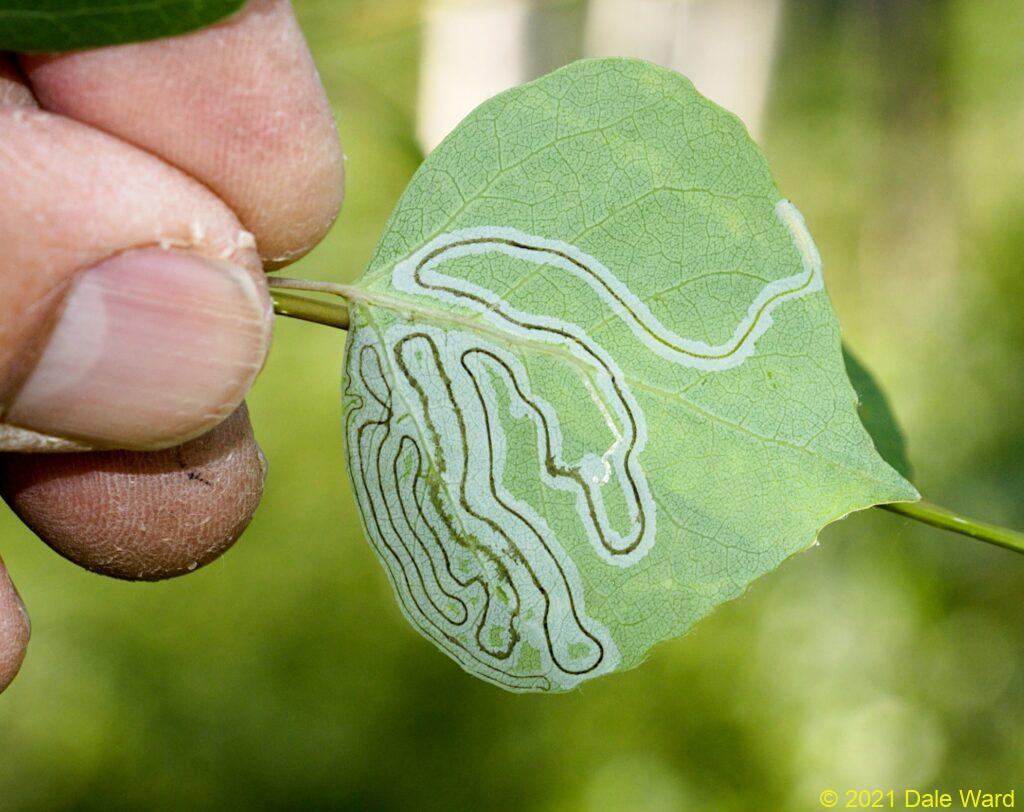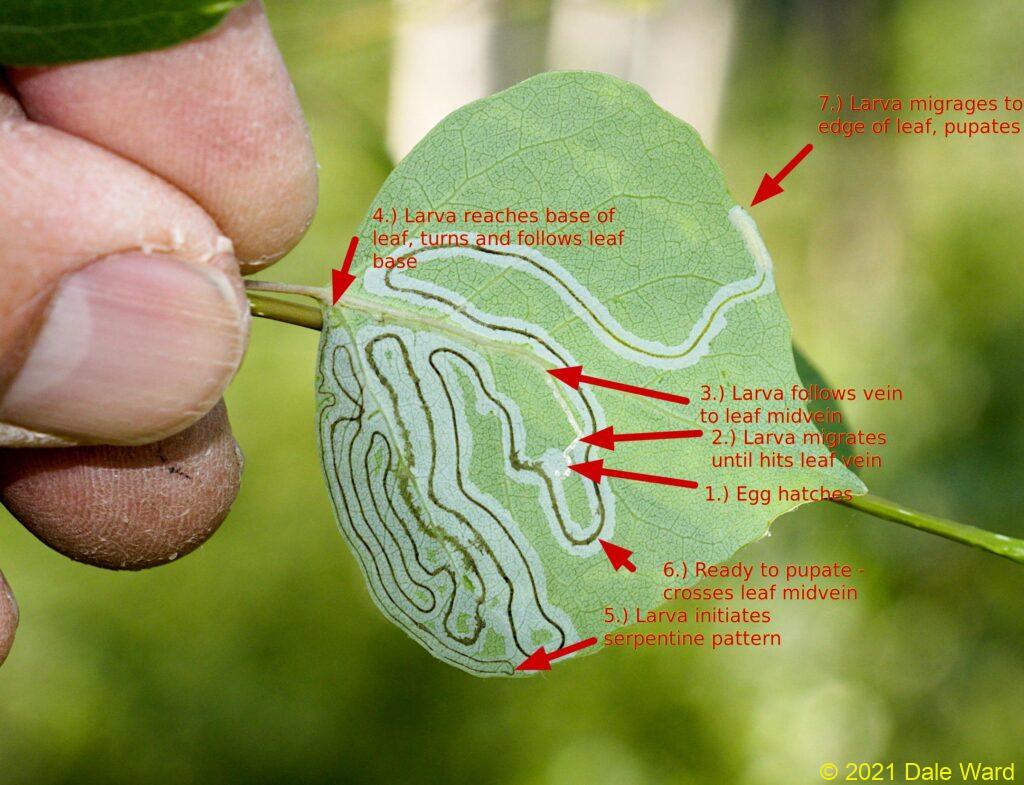Aspen Serpentine Leaf Miner (Phyllocnistis populiella)
Who makes these strange tunnel-patterns in leaves?
 Aspen Serpentine Leaf Miner (_Phyllocnistis populiella_) damage on Aspen leaf.
Aspen Serpentine Leaf Miner (_Phyllocnistis populiella_) damage on Aspen leaf.
Here’s a neat thing we found on our hike into the San Juan Mountains this morning (Mid June, 2021). It’s a Quaking Aspen leaf that looks as though someone has been doodling on the leaf with a pen.
That “doodling” is damage to the leaf, caused by an insect that lives between the upper and lower layers of the leaf…a “leaf miner.”
Leaf miners are insects that live inside of leaves - they eat the inside of the leaf, mining the leaf’s inner tissue while ignoring the tissue on the outside of the leaf.
Being a leaf miner must be a good way to live, because there are thousands of insect species that are leaf miners.
The pattern on this Aspen leaf is distinctive, though - it’s from the Aspen Leaf Miner, Phyllocnistis populiella. I’ve also seen it called the “Common Leaf Miner” and the “Serpentine Leaf Miner”. These are “Microlepidoptera” - tiny little moths.
I found a paper by Dr. Morton etal (2011) that describes the genesis of this pattern these caterpillars make with their leaf mines. I had a lot of fun matching the pattern in this particular leaf with the caterpillar’s life-cycle/mining algorithm as described in the paper.
 Aspen Leaf Miner - genesis of the distinctive-looking mines
Aspen Leaf Miner - genesis of the distinctive-looking mines
1.) The adult moth lays an egg somewhere on the leaf, usually towards the leaf tip. This one appears to be about halfway to the leaf tip…the caterpillar ate for a while, creating the small circular area, then started traveling in a straight line.
2.) The larva hit a leaf vein, and turned to follow it to the mid-vein of the leaf.
3.) The larva ate down the side of the mid-vein until it reached the base of the leaf.
4.) After reaching the base of the leaf, the larva turns to follow a basal edge of the leaf. Note how the tunnel is getting wider as the caterpillar gets larger.
Note also the black line that looks as though some one has drawn it with a pen, which starts at this point. That black line is from caterpillar droppings, or frass. I’m guessing that the caterpillar stays in the middle of the its tunnel, leaving the trail of frass behind it, as the caterpillar swings its head from side to side, eating.
5.) After reaching the leaf edge, the caterpillar makes an abrupt turn to more-or-less parallel its original mine tunnel…this is the start of the serpentine pattern. The larva continues this serpentine movement, turning whenever it hits resistance or the edge of an existing tunnel.
6.) The larva is evidently getting ready to pupate (or runs out of leaf on this half). It stops the serpentine pattern, and migrates across the leaf mid-vein.
7. After crossing the mid-vein, the caterpillar migrates again to the base of the leaf, then to the outer edge of the leaf and pupates.
From reading Dr. Morton’s paper, it sounds like there are a lot of variations in this scheme. For example, if the caterpillar is on a small leaf, it’ll cross the mid-vein early and serpentine on the other side of the leaf until that tissue is mostly gone, too.
I’m fascinated by how both stereotypical the behavior of these caterpillars seems to be. I’m similarly fascinated by the flexibility the caterpillars show when implementing their stereotypical behavior.
I just love this stuff.
Sources:
Morton, Martin L. and Maria E. Pereyra. (2011). MINING PATTERNS OF THE ASPEN LEAF MINER, PHYLLOCNISTIS POPULIELLA, ON ITS HOST PLANT, POPULUS TREMULOIDES. Western North American Naturalist 71(1), © 2011, pp. 33–37.